Under the osteoarthritis refers to a degenerative process in the intervertebral discs. The spine is compressed, crushing the disks that lie between the vertebrae. With the hour they lose their elasticity, and begin now to constricted and the nerve endings of the spinal cord.
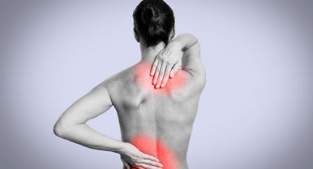
As with any other disease, low back pain should be treated under medical supervision. Next, we will explain in detail what is this disease, why it occurs and which symptoms are characteristic for him.
What is osteochondrosis?
Osteochondrosis is a disease of the spine, a characteristic feature of which are degenerative-dystrophic lesion of the intervertebral discs, and then the very tissue of the vertebrae.
Degenerative changes in disc lead to the weakening of its outer fibrous ring. Therefore, patients with degenerative disc disease often have such serious complications, as protrusion (bulging part of the disc) and hernia (overhang nucleus pulposus of the disc into the spinal canal).
According to the results of medical studies, problems with the spine suffers every second man after 30 years. In 70% of cases the cause of pain in the spine is the degenerative disc disease, which refers to neurological diseases affecting the ties binding the device to the spinal column.
Like any other disease, low back pain may not arise by itself, for no reason, hitting the back of a sharp pain. The first signs of osteochondrosis of the spine are not apparent immediately, gradually.
Depending on the places of pain there are three types of osteoarthritis:
- Cervical;
- Thoracic;
- Lumbar.
Important! The main complications of degenerative disc disease include protrusion of the intervertebral discs, schmorl's nodule, ankylosis of the spine, pinching the roots of spinal nerves and vessels.
Reasons
According to many experts who study this disease, the main cause of osteoarthritis is incorrectly distributed load on the spine. As a result, patients directly in the field, which is the excess of physical pressure, there is a change in the structure of cartilage.
The causes of osteochondrosis:
- Genetic predisposition to the disease.
- The presence of diseases of the endocrine system and metabolic disorders.
- The development of orthopedic diseases such as flat feet, curvature of posture, diseases of the musculoskeletal system.
- A variety of injuries, injuries of the spine.
- Lifestyle: lack of activity, poor diet with a predominance of fast-food dishes and harmful products.
- The presence of excess weight.
- Bad habits – Smoking, alcoholism.
- Stress, protoplanet.
- Pregnancy.
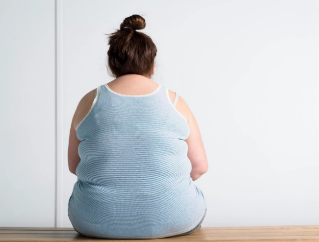
In most cases the causes of osteochondrosis are related to the professional activity of the person. The risk group includes the following professional categories:
- accountant;
- cashiers;
- IT-workers.
- office workers;
- professional athletes;
- drivers of vehicles.
However, it is stated that the signs of osteoarthritis more often occur in women than men.
Stage of development
The development of degenerative disc disease occurs in 4 of stages (degree):
Low back pain stage 1
Is characterized by early pathological process in polipozom the nucleus of the intervertebral disc is dehydrated (dehydration), and further the height of the disc decreases. Thus in the fibrous ring compounds begin to appear cracks. At this stage the patient usually does not feel any changes. Discomfort can manifest in unusual for a person to the position of the seat, or active charge.
Stage 2
In the second stage of osteochondrosis of the continuation of the degenerative changes leads to protrusion of the discs. Reduced the gap between the vertebrae, is the destruction of the fibrous capsule. In the result, violated the spinal nerve roots that provokes the appearance point of pain, the intensity of which increases with tilt, swivel, and other movements. Perhaps the appearance of weakness, decreased performance.

Stage 3 degenerative disc disease of the spine
Is characterized by the Erasure of the cartilage pads between the discs, thinning tissue is well noticeable if to make renthenznimky. The symptoms of osteochondrosis white expressed, are intensive, and a pain to place and remove it only capable of potent painkillers.
Stage 4
The fourth stage is a complex neurological disorder in the spinal system, which is expressed in a partial or complete restriction of mobility of joints. In this diagnostic condition in the place of vertebral joints formed bony growths (osteophytes) that cause microtrauma to the nerve branches and the adjacent segments of the spine.
In most cases, the symptoms of osteochondrosis of 4 degrees does not cause pain and discomfort as the joints become petrified look.
Symptoms of osteoarthritis in adults
Osteochondrosis – degenerative-dystrophic changes (destruction) of bone tissue of the spine, articular cartilage, connection of required apparatus and intervertebral discs. Over the disease is formed abnormal mobility of the spinal column, which violated the m tissue, nerve fibers and blood vessels located close to the lesion – causing pain.
The main symptoms of osteochondrosis:
- back pain, cervical, lower back, shoulders and even the ribs;
- the discomfort, the stiffness keeps in some movements, lifting something;
- numbness of extremities (hands and/or feet);
- feeling aches in arms and legs, chills;
- muscle spasms;
- disorders in the genital organs;
- headaches, dizziness;
- pain in region of heart;
- violations of sensitivity;
- mild muscle hypotonia;
- fatigue, and sometimes the eyes.
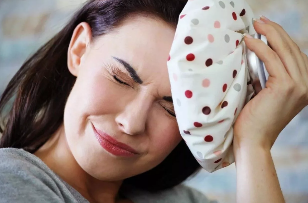
To facilitate the occurrence of acute symptoms may excessive exercise, fatigue, hypothermia, trauma, body shake and vibration.
Complications
Degenerative processes affecting primarily the intervertebral discs, which reduce their density, losing their shock-absorbing functions. The consequence of these changes is excessive mobility of the spine affects the facet joints, soft muscles and ligaments.
Involved in the destructive processes paravertebral structures cause compression (squeezing) of the spinal cord, its nerve endings. As a result, the patient with osteoarthritis feels pain, accompanied by such symptoms and diseases:
- severe headache, migraine;
- the decrease in visual acuity.
- partial hearing loss;
- radiculopathy (sciatica);
- autonomic dysfunction (VSD);
- dysfunction of the urogenital system;
- sciatica (compressions of sciatic nerve);
- disc herniation;
- spondiloarthrosis;
- lumbago, lumbalgia;
- osteophytes, spondylos;
- the spinal stenosis.
Worst of all, along with osteochondrosis you begin the connection to appear and other diseases. The fact that damaged the neurovascular bundle, deteriorating blood circulation, as a result of disease of the whole organism.
Aggravation of degenerative disc disease
Spring often comes a worsening of the lower spine, in the winter of acute thoracic. Aggravation can be when the weather changes, stress, physical exertion. During exacerbation of the disease is prescribed with painkillers, local ointments, medications that relieve swelling and muscle spasm. Diuretic used in severe edema, but at the same time it is necessary to apply preparations of sodium and potassium.
Diagnosis
Diagnosis of osteoarthritis is based on such methods:
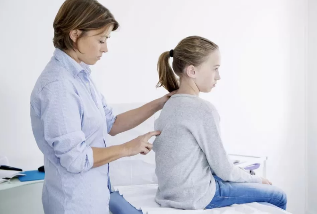
- History is the study of the complaints of the patient and coupling Aswan hours of occurrence, cause, duration, characteristics of the disease.
- Physiological examination:
- conducted diagnostics of posture, gait, range of motion of the patient;
- studied the skin to identify areas of redness, peeling, a rash;
- palpable painful areas to determine the local temperature, presence of edema, m of asovih spasms, seals;
- to identify the site of pain radiation of pain is percussion with a finger or a special hammer;
- tingling needle helps to determine pain sensitivity.
Instrumental methods of diagnosis of osteoarthritis:
- X-ray diagnostics plays a key role in this disease. Conventional radiography allows to identify such signs of disease, such as narrowing the gap between the vertebrae.
- Magnetic resonance imaging (MRI) – a research method that allows to perform a precise diagnosis occur in the spine processes. With his help, in particular, it is possible to determine the presence grimestone disk and its localization.
- Computed tomography (CT) are similar in their diagnostic capabilities for MRI. The disadvantage of CT is the presence of the radiation during the study.
How to treat osteochondrosis?
There is no specific and only correct method of treating degenerative disc disease – this process under any circumstances requires a comprehensive approach. If the doctor says otherwise, you should think about his professional qualifications and to consider finding another expert.
A comprehensive program traditionally includes the following components:
- physiotherapeutic methods of influence;
- special exercises and massage;
- methods of manual therapy;
- medication;
- reflexology, electrophoresis;
- extract.
Recommendations for treatment of degenerative disc disease at home:
- The rejection of bad habits and a gradual transition to the acquisition of useful habits. Smoking, alcohol leads to spasms and without the entrapped vessels, dorsal artery.
- Diet avoiding rich and contain cholesterol foods: eggs, broth, skins of birds and pigs.
- Restrict intake of strong coffee and tea, gradually switch to herbal herbal teas and fresh juices.
- To choose the right mattress and pillow to sleep, preferably orthopedic.
- The restoration of normal blood circulation in satiksi m muscles and disks by massage, self-massage, complex physical therapy, compresses, rubbing and wooden herbal infusions and alcoholic tinctures of herbs.
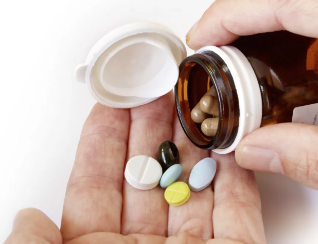
Drugs from osteoarthritis
Specialists in the treatment of such patients, prescribe medicines with the following properties: relieve inflammation, restore the function of musculoskeletal system, stimulate the regeneration of tissues of the intervertebral discs and cartilage and prevent the progression of osteoarthritis.
Treatment of osteoarthritis is on the traditional ways of treatment of many diseases of the musculoskeletal system are assigned to NSAIDs to eliminate the inflammatory process in the tissues, chondroprotectors to restore the level of synovial fluid and corticosteroids, if the first two ViDi drugs proved to be ineffective.
Massage
In order to get rid of osteoarthritis, using various therapy treatments, including massage. It has many useful properties — removed m atovi tone, blood flow in the spine is stimulated, the spinal discs become stronger.
Manual therapy in osteochondrosis
Manual therapy relieves acute pain, helps to restore posture. One of the most used methods is visceral therapy. In the course of conducting a qualitative study of joints, improve the circulation of blood, strengthen the immune system. To prevent aggravation of various chronic diseases.
Physical therapy — therapeutic exercise
Physiotherapy or physical therapy in osteochondrosis of great importance. So, special exercises for strengthening of muscles keeps the contribute to the formation of soft muscle corset, which in turn provides uniform distribution of load on the spine. In addition, due to the regular practice improves blood circulation and nutrition of tissues, including intervertebral discs, is that the patient develops the correct posture, increase range of motion in the spine.
To therapeutic physical training and gymnastics to bring the expected effect, must adhere to the following rules:
- Exercises with osteochondrosis need to perform regularly.
- All movements should be smooth and slow.
- The breathing should be smooth.
- Follow the pulse rate.
- If you experience discomfort and pain in the muscles and spine to reduce the amplitude and intensity of movements.
- Gymnastics and gymnastics can be enjoyed at any time of the day.
- For medical gymnastics and physical education choose comfortable clothes made of natural fabrics.
- Before you start doing physiotherapy and exercises, you need to consult with your doctor.

Physical therapy
Helps to effectively deal with painful manifestations in the places of localization of the pathological process. There are many types of physiotherapeutic treatment. They often resort to the use of magnetotherapy, ultrasound therapy, as well as the actions of low-frequency currents.
Effects of thisprocedure can be:
- normalization of metabolism in the affected areas;
- the increasing resistance of the organism;
- pain relief;
- improvement of microcirculation in the spine and paravertebral tissues;
- removal of edema;
- the reduction of the inflammatory process;
- improvement of mobility of the spine.
Low back pain as any other disease of the spine requires immediate treatment. At the first signs be sure to consult a podiatrist. Be healthy!































